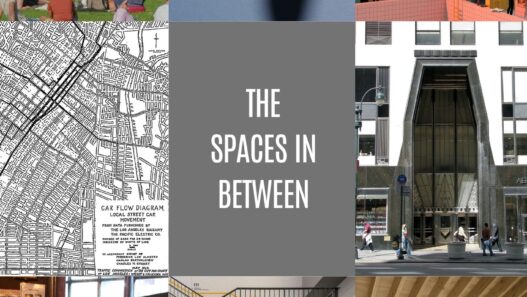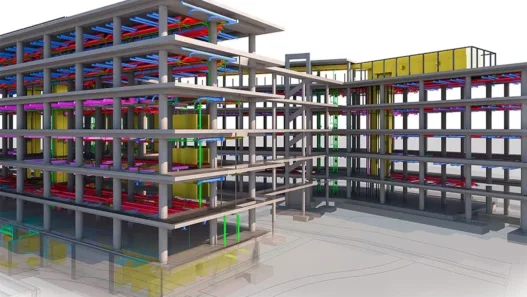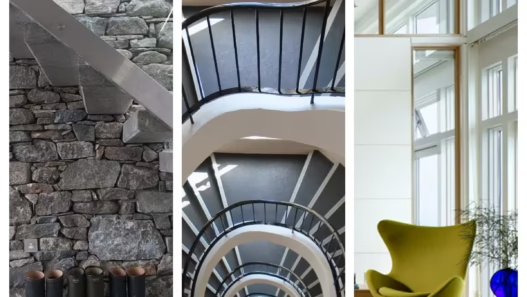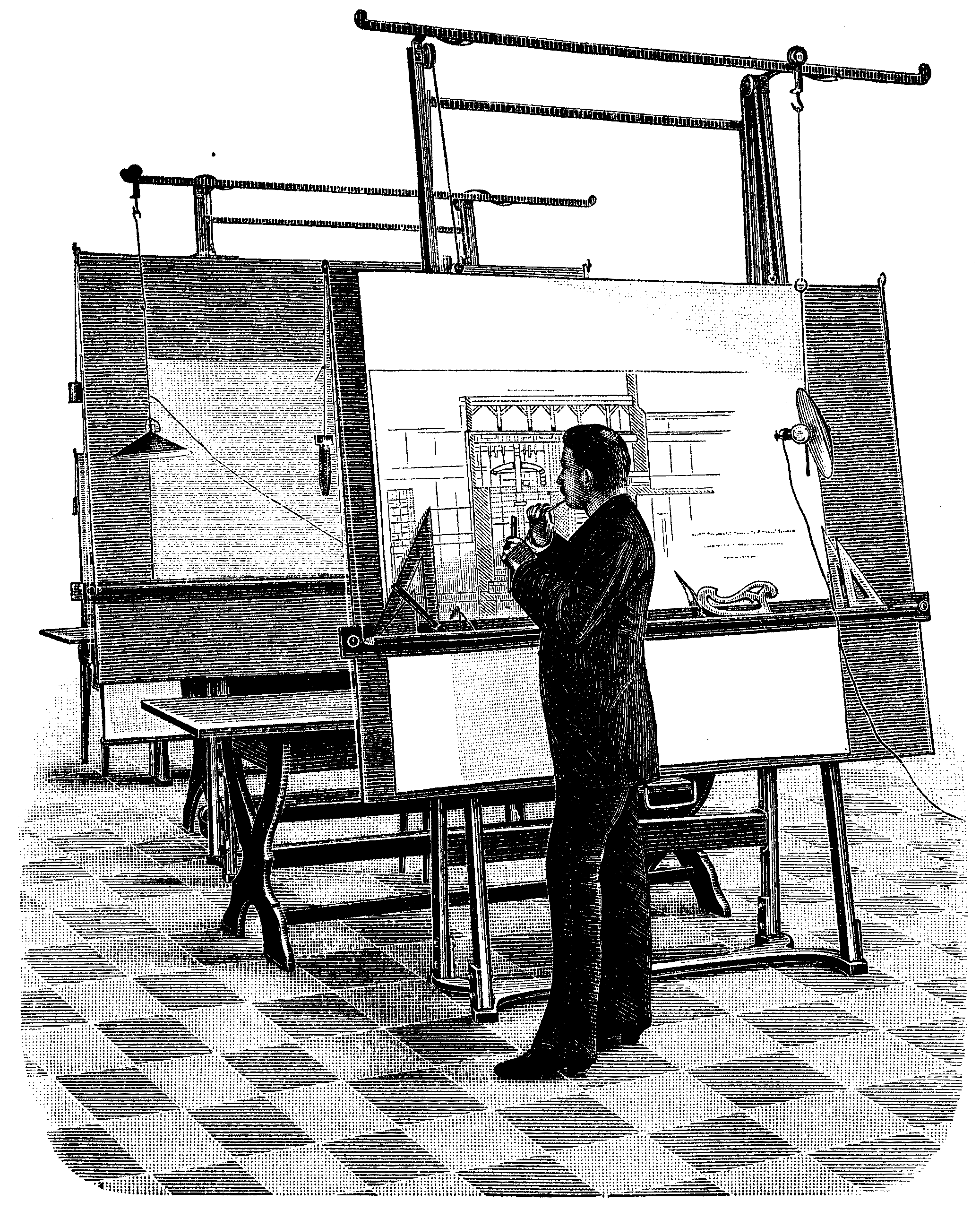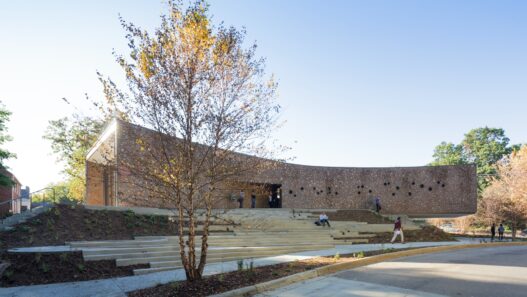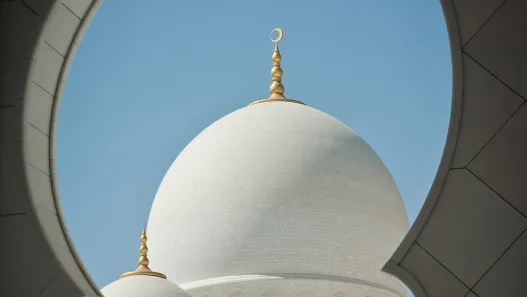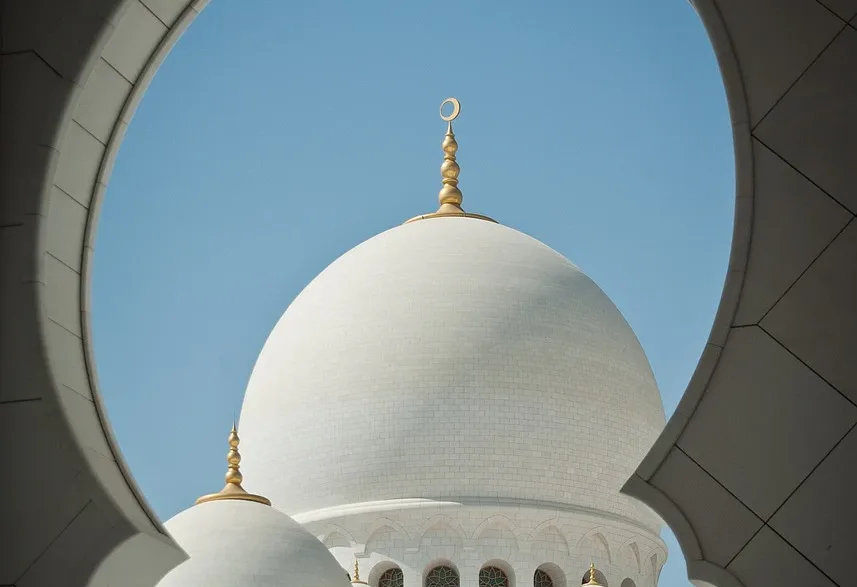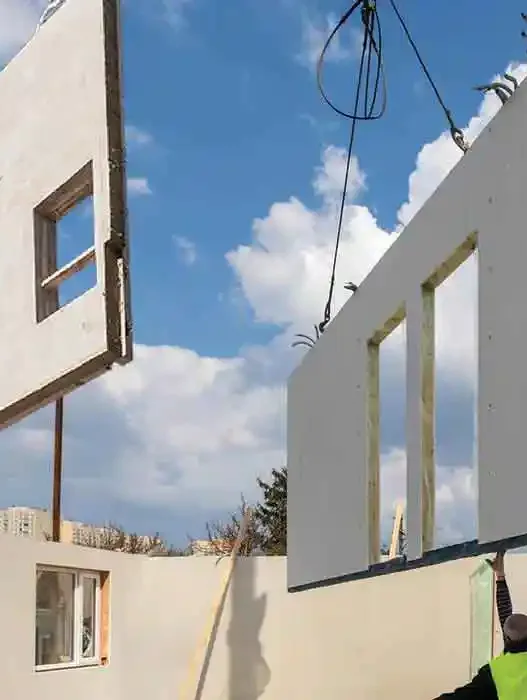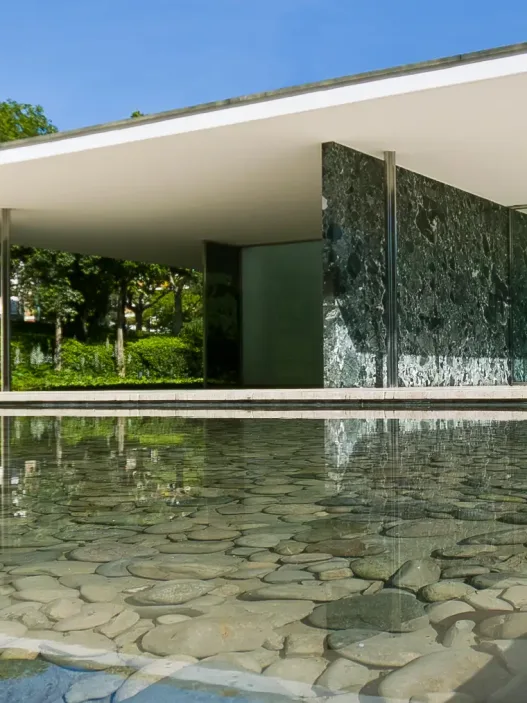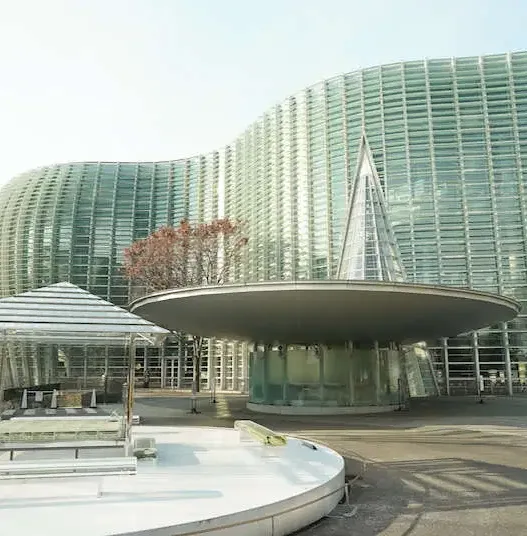Understanding the historical context of architectural styles is crucial to appreciate their significance and evolution. This chapter examines the origins, development and influences that have shaped the use of domes in architecture, particularly in Islamic culture.
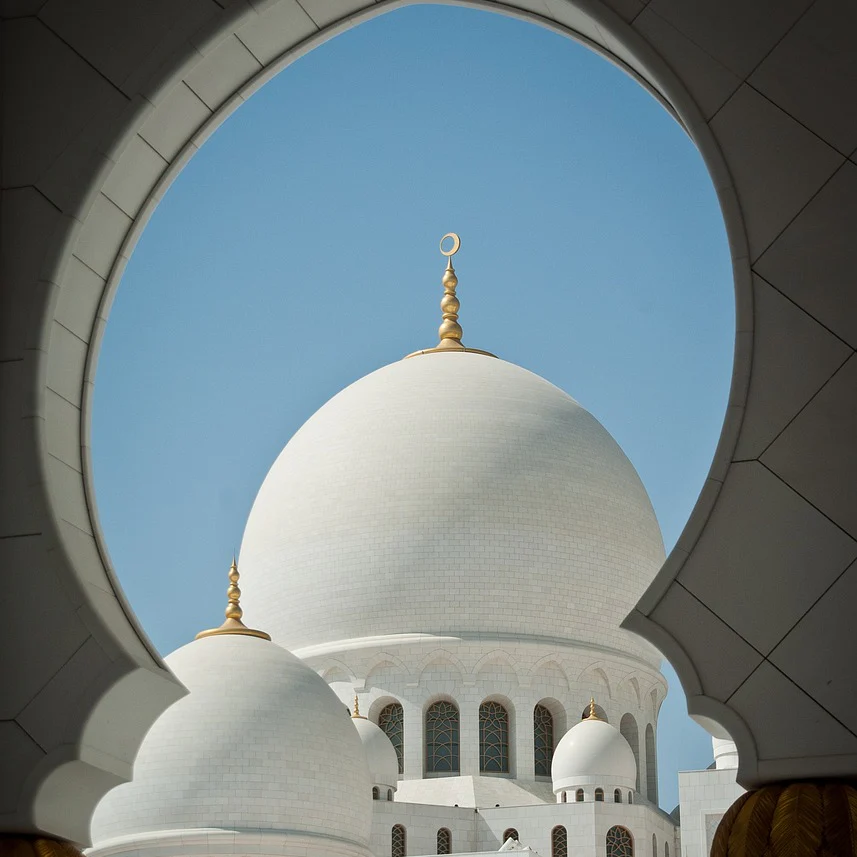
Origins of Domes in Islamic Architecture
The use of domes in Islamic architecture has its roots in various ancient civilizations. The first examples can be traced back to the Roman and Byzantine empires, where large, vaulted structures were prominent. However, it was Islamic architects who developed and reinterpreted these forms, creating aesthetically striking domes. The dome became a symbol of the heavens, representing the divine and the infinite.
In the 7th century, as Islam spread rapidly across different regions, the architectural style began to incorporate local materials and traditions. The blending of these influences led to the development of unique dome designs that reflect both religious significance and cultural identity. The use of domes has become a hallmark of mosque architecture, serving as a focal point for worship and congregational gatherings.
Evolution through the Ages
As Islamic architecture developed, so did the design and construction of domes. Early domes were often simple and utilitarian, but as the Islamic Golden Age progressed, architects began to experiment with more elaborate forms. The introduction of new construction techniques, such as ribbed and pointed domes, allowed higher and more complex shapes to emerge.
During the medieval period, Persian influence became particularly important, with intricate tile work and calligraphy decorating the surfaces of the domes. The Mughal Empire further developed dome architecture, exemplified by the Taj Mahal, whose great dome remains one of the most iconic representations of this style. Each period brought its own innovations, resulting in a rich tapestry of dome design that showcases the creativity and skill of Islamic builders.
Influences from other cultures
The evolution of domes in Islamic architecture was not an isolated phenomenon; it was a dynamic interaction of various cultural influences. As trade routes expanded and empires intertwined, ideas flowed freely between civilizations. The Byzantine Empire, with its majestic domes, had a profound influence on early Islamic architects, who admired these forms and adapted them to their own spiritual and cultural needs.
The influence of Persian architecture introduced new decorative elements, while Indian and Central Asian styles also contributed to the diversity of dome design. This cross-pollination of ideas led to innovations such as the inclusion of complex geometric patterns and motifs that became synonymous with Islamic aesthetics.
Important Historical Milestones
There are several important milestones in the journey of dome architecture within Islamic culture. The Dome of the Rock in Jerusalem, built in the late 7th century, stands out as an important early example that demonstrates the combination of religious significance and architectural innovation.
The Seljuk Turks further advanced the evolution of the dome in the 11th century, leading to larger and more complex designs. The development of muqarnas, an ornamental vaulting technique, added a new layer of depth and complexity to dome interiors. The architectural achievements of the Ottoman Empire, especially during the reign of Suleiman the Magnificent, gave rise to monumental domes that dominated city skylines, as seen in the Sultan Ahmed Mosque in Istanbul.
Important Early Examples
Some of the oldest and most remarkable examples of domes in Islamic architecture emphasize the artistry and mastery of their creators. The Great Mosque of Samarra, built in the ninth century, features a massive spiral minaret covered by a dome, demonstrating the harmonious relationship between form and function.
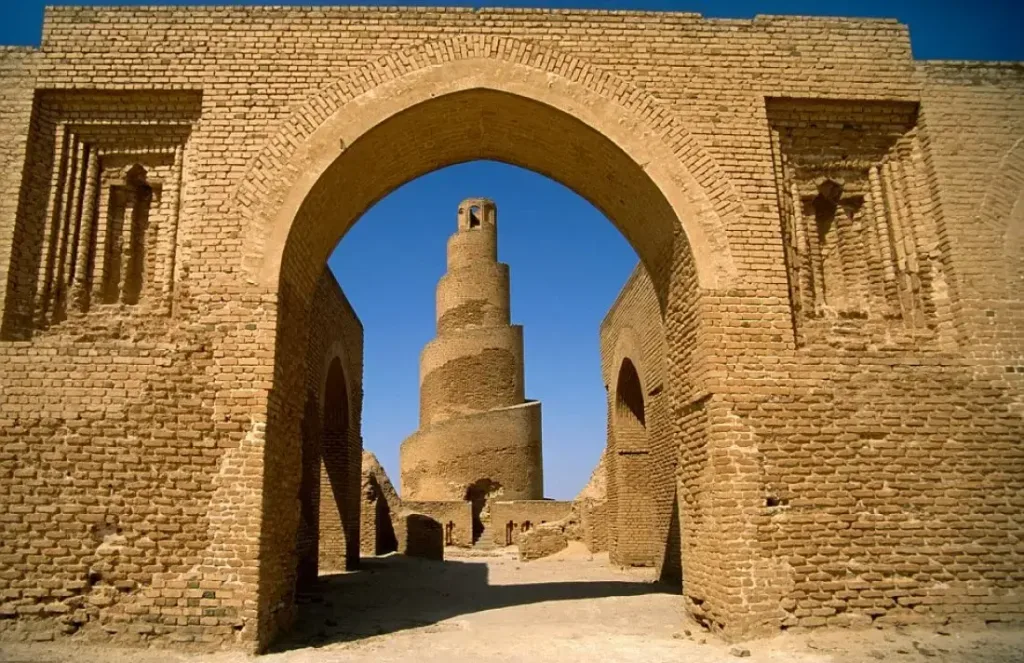
Another remarkable example is the Alhambra in Spain, where intricate domes showcase the mastery of Islamic artisans. These structures became canvases for artistic expression, with stucco work, tile mosaics and intricate carvings reflecting the cultural richness of their time.
The historical context of domes in Islamic architecture reveals a fascinating narrative of adaptation, innovation and cultural exchange. From their ancient origins to their evolution through various influences, these architectural wonders continue to inspire and fascinate, serving as enduring symbols of faith and creativity.
Architectural Significance
Architecture is much more than creating functional spaces; it embodies cultural values, technological advances and artistic expressions. The importance of architecture lies in its ability to reflect social changes, aspirations and innovations over time. This section discusses various aspects that emphasize the importance of architecture, with a particular focus on structural innovations, aesthetic concerns, symbolic meanings, integration with other elements, and regional differences in dome design.
Structural Innovations
Structural innovations in architecture have revolutionized the way we build and live in spaces. For centuries, engineers and architects have pushed the boundaries of materials and techniques to create safe and durable structures. One of the most notable innovations is the use of reinforced concrete, which allows the construction of taller buildings with complex shapes. The Burj Khalifa in Dubai, for example, stands as a testament to modern engineering, rising to heights once unimaginable.

Sustainable building practices, such as green roofs or the use of solar panels, show how modern architecture can harmonize with nature. The Bosco Verticale in Milan, with its lush green space integrated into the façade, exemplifies how innovative buildings can contribute to urban biodiversity while bringing a new perspective to residential living.
Aesthetic Considerations
Aesthetics in architecture plays a crucial role in how we perceive and experience spaces. The beauty of a building can evoke emotions, inspire creativity and foster community. Architects often draw on a variety of styles and movements, from classical to modernism, to create visually striking designs that resonate with their surroundings and the people who use them.
Consider the Guggenheim Museum in Bilbao, designed by Frank Gehry. Its fluid, organic shapes and reflective surfaces challenge traditional notions of form and function. This building has not only served as an art museum, but has also transformed the city into a cultural center that attracts visitors from around the world. The aesthetic appeal of architecture can create a sense of place, encourage social interaction and contribute to a community’s identity.

Furthermore, the use of light and space is a critical aspect of aesthetic considerations. The interaction of natural light within a structure can dramatically change its atmosphere. For example, the use of large windows in modern homes not only invites the outside in, but also emphasizes the connection between indoor and outdoor spaces. This relationship enhances the overall experience of the built environment, making it more inviting and enjoyable.
Symbolism of the Dome
The dome has long been a powerful symbol in architecture, representing unity, spirituality and heaven. Its shape, reminiscent of the sky, often conveys a sense of longing and transcendence. Domes are often found in religious buildings such as churches and mosques, where they serve both functional and symbolic purposes.
One of the most iconic examples is the dome of St. Peter’s Basilica in the Vatican, designed by Michelangelo. This magnificent structure not only crowns one of the holiest sites in Christianity, but also serves as a visual focal point for the city of Rome. The grandeur of the dome inspires awe and respect, prompting visitors to contemplate its spiritual significance.
In addition to religious contexts, domes have also been used in civic architecture to symbolize democracy and governance. The United States Capitol, with its prominent dome, represents the ideals of the nation and serves as a gathering place for democratic processes. This symbolism extends beyond the physical structure, embodying the principles of openness, representation and unity.
Integration with Other Architectural Elements
The integration of domes with other architectural elements creates a harmonious whole that enhances both function and beauty. Architects often combine domes with arches, columns and vaults to achieve a harmonious design that is both structurally sound and visually captivating. This combination of forms allows for the creation of spaces that are not only aesthetically pleasing but also serve specific purposes.
At the Alhambra in Spain, for example, the use of domes in combination with intricate tile work and lush gardens creates a serene environment that reflects Islamic principles of beauty and contemplation. The dome acts as a focal point, drawing the eye upwards, while the surrounding elements provide context and complement its splendor.
Moreover, modern architecture has seen innovative uses of domes in combination with contemporary materials and technologies. The Eden Project in the UK features geodesic domes made of ETFE (ethylene tetrafluoroethylene), allowing maximum light penetration while maintaining structural integrity. This integration of traditional forms with modern materials shows how architects can innovate while respecting historical significance.
Regional Variations in Dome Design
Dome designs vary significantly between different regions and cultures, each reflecting local materials, climate and traditions. In the Middle East, for example, domes are often built of adobe and feature pointed arches and intricate geometric patterns, referencing the region’s rich artistic heritage. The Dome of the Rock in Jerusalem, with its eye-catching golden surface, exemplifies the region’s unique approach to dome architecture.
In contrast, Roman domes such as the Pantheon are characterized by their coffered ceilings and oculus, a circular opening that allows natural light to illuminate the interior. This design not only serves structural purposes, but also establishes a link between the earthly and the divine.
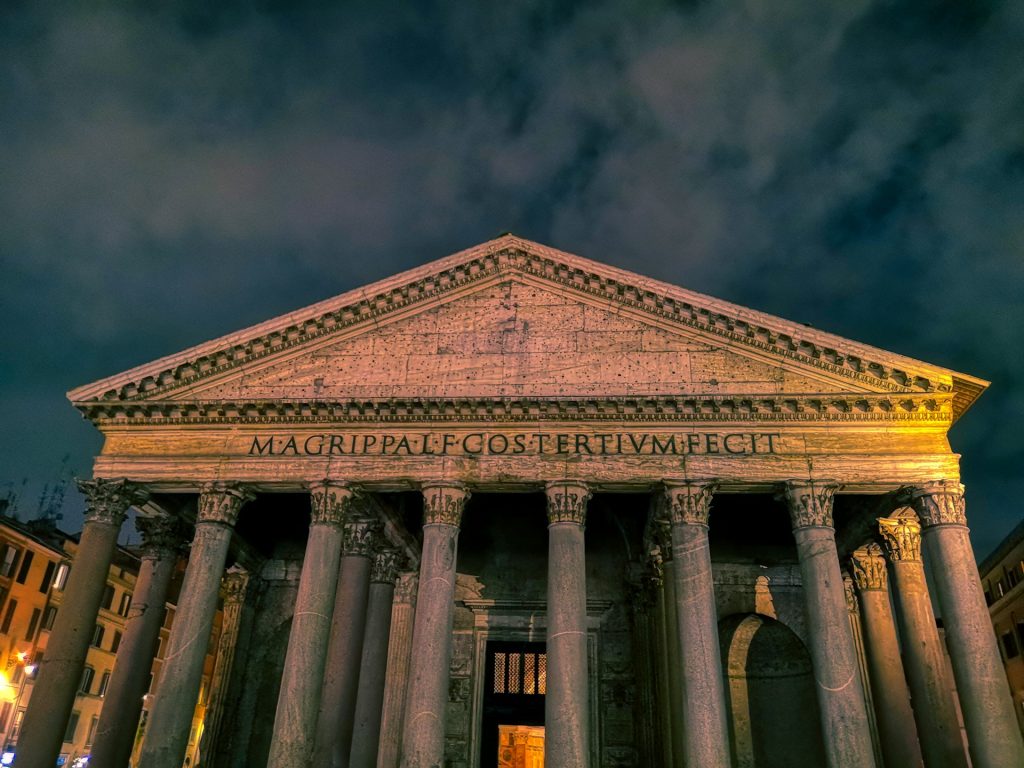
In modern contexts, dome designs continue to evolve. The use of materials such as glass and steel allows for innovative shapes and structures that can adapt to contemporary urban environments. The Kauffman Center for the Performing Arts in Kansas City features a series of striking domes that blend seamlessly with the surrounding architecture, demonstrating how regional differences can lead to new interpretations of traditional forms.
In conclusion, the architectural significance of various elements, especially domes, lies in their ability to convey deeper meanings, reflect cultural identities and inspire future innovations. By understanding these aspects, we can appreciate the art and craftsmanship that shape the environments in which we live.
Iconic Domes in Islamic Architecture
Islamic architecture is famous for its intricate designs, majestic structures and especially for its striking domes. These domes have a deep spiritual significance and showcase the artistic prowess of the different cultures of the Islamic world. They serve as symbols of heaven and the divine, drawing the eyes upwards and inspiring awe in those who see them. Throughout history, various domes have emerged as iconic representations of Islamic architecture, each telling a unique story.
Rock Dome
The Dome of the Rock in Jerusalem is one of the oldest and most revered Islamic structures. Completed in AD, this octagonal shrine is located on the Temple Mount, a sacred site for both Muslims and Jews. Its golden dome, shimmering in the sunlight, also serves as a symbol of Islamic faith and heritage.
The Dome of the Rock’s architectural design is a blend of Byzantine and Persian influences, showcasing intricate tile work and calligraphy that reflect the beauty of Islamic art. The structure was built around a sacred rock believed to be the place where the Prophet Muhammad ascended to heaven during his Night Journey. This spiritual connection adds to the dome’s significance and makes it a pilgrimage destination for many.
The Dome of the Rock is a testament to the importance early Islam placed on creating spaces that inspired reflection and reverence. Its architectural beauty continues to influence Islamic design and marks an important moment in the evolution of religious buildings.
Great Mosque of Samarra
Built in the 9th century in Iraq, the Great Mosque of Samarra is famous for its unique spiral minaret and large courtyard. Although the minaret of the mosque usually attracts attention, the dome of the mosque plays a crucial role in its architectural narrative. Although the original dome no longer stands, the site remains an important example of early Islamic architecture.
The design of the mosque reflects the grandeur of the Abbasid Caliphate and emphasizes the importance of both function and aesthetics. The massive scale of the mosque, combined with its intricate ornamentation, showcases the ambition of Islamic builders during this period. The vastness of the dome symbolized heaven and invited worshippers to contemplate the divine.
Awe-inspiring even in ruins, the Great Mosque of Samarra represents an era when Islamic architecture pushed the boundaries of design and engineering. Its legacy continues to inform contemporary mosque architecture, emphasizing the importance of communal gathering and spiritual reflection.
Blue Mosque in Istanbul
The Blue Mosque, officially known as the Sultan Ahmed Mosque, is a striking example of Ottoman architecture located in Istanbul. Completed in 1616, this mosque features a series of domes and half domes that form a harmonious silhouette against the skyline. Its central dome surrounded by smaller domes is both striking and functional, providing a spacious interior filled with natural light.
The mosque is adorned with exquisite blue tiles, which give it its popular name. These tiles, together with intricate calligraphy and stained glass windows, contribute to the serene and sacred atmosphere of the mosque. The design reflects a deep understanding of light and space, creating a serene environment for worship.
The Blue Mosque also serves as a cultural icon, attracting millions of visitors each year. Its architectural beauty and historical significance make it a vital part of Istanbul’s identity and showcase the richness of its Islamic heritage.
Sheikh Lutfullah Mosque
Located on the eastern side of Imam Square in Isfahan, Iran, the Sheikh Lutfullah Mosque is a masterpiece of Safavid architecture, completed in 1619. Unlike other mosques that emphasize grand entrances, this mosque stands out for its simple facade, giving way to a breathtaking interior that is a feast for the senses.
The dome of the Sheikh Lutfullah Mosque is particularly striking and features intricate tile work that transitions from dark blue to light azure. This gradual change creates an ethereal quality, especially when illuminated by sunlight. The interior, decorated with delicate arabesques and floral motifs, showcases the artistry of Iranian artisans.
This mosque is a celebration of beauty and spirituality. The design encourages contemplation and reflection, drawing visitors into a world where art and faith coexist in harmony. The Sheikh Lutfullah Mosque exemplifies the fusion of architecture and spirituality that characterizes much of Islamic design.
Taj Mahal
Often cited as one of the most beautiful structures in the world, the Taj Mahal is a mausoleum in Agra, India. Built by Emperor Shah Jahan in memory of his beloved wife Mumtaz Mahal, this UNESCO World Heritage site is an iconic symbol of love and devotion. While the entire structure is breathtaking, the dome is particularly significant.
Towering majestically above the main building, the Taj Mahal’s dome is a perfect example of Mughal architecture, blending Iranian, Islamic and Indian styles. Its shape, often described as an “onion dome”, symbolizes the heavens, while the surrounding gardens and reflecting pool enhance its ethereal beauty. The use of white marble, which changes color throughout the day, adds to the monument’s charm.
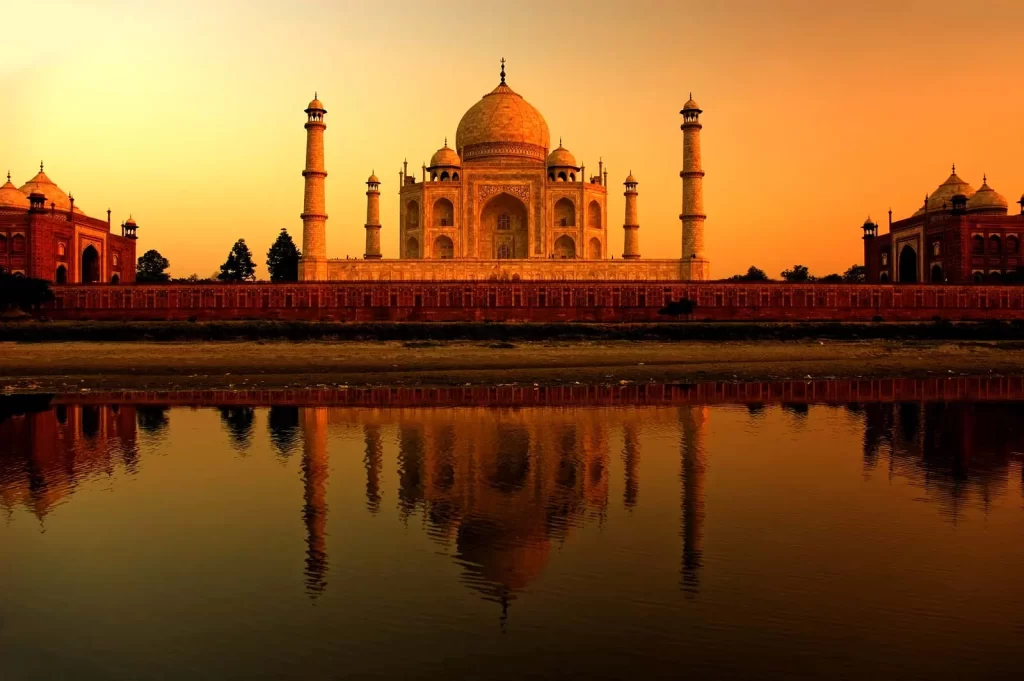
The Taj Mahal serves as a reminder of the artistic and architectural achievements of the Mughal Empire. It also stands as a tribute to the power of love and the enduring legacy of Islamic architecture. Visitors from around the world are drawn to the dome’s beauty, exploring its intricate details and contemplating the stories hidden within its walls.
In conclusion, the domes of Islamic architecture are much more than structural elements; they embody the culture, spirituality and artistic expression of their time. From the sacred to the monumental, each dome tells a story and invites us to explore the various aspects of Islamic heritage and its lasting impact on architecture worldwide.
Cultural and Religious Significance
Architecture serves as a powerful means of expression, reflecting the values, beliefs and aspirations of a society. Among many architectural forms, domes stand out for their deep cultural and religious significance. Throughout history, domes have gone beyond being merely structural elements and have symbolized faith, community and spirituality in various cultures and religious practices.
Domes as a Symbol of Faith
Domes have long been recognized as powerful symbols of faith, embodying the celestial and the divine. In many cultures, the dome represents the heavens and creates a visual link between earth and sky. This architectural feature is common in religious buildings such as mosques, churches and temples. For example, the dome of Hagia Sophia in Istanbul, originally a basilica and later a mosque, shows the intertwining of spirituality and architectural innovation. The large dome draws the eye upwards, inviting worshippers to contemplate higher realms.
The use of the dome in sacred spaces carries deep symbolic meaning. In Islamic architecture, the dome expresses the unity of the community under one God, while in Christian churches it often represents the glory of God. This duality enhances the spiritual experience of worshippers, providing an environment that inspires respect and reflection.
Role in Islamic Rituals
In Islamic culture, domes play an important role in the practice of rituals. The design of mosques often features a prominent dome that serves as a focal point for prayer. The large domes of mosques, such as the iconic Dome of the Rock in Jerusalem, are an integral part of Islamic faith and ritual. Domes create a favorable acoustic environment for collective worship.
During important religious events such as Friday prayers, the dome amplifies the voices, allowing the imam’s teachings to resonate throughout the space. The design encourages congregation as the dome creates a sense of openness and unity among worshippers. In addition, the direction of the dome often aligns with Mecca, further deepening the connection between the physical space and the spiritual journey of the faithful.
Community Gatherings and the Dome
Beyond their religious significance, domes are central to community gatherings and the social fabric of society. Many cultures use domed structures as venues for festivals, weddings and communal celebrations. The spacious interior of the dome provides a cozy space for large groups, encouraging a sense of togetherness and shared experience.
For example, in many Mediterranean cultures, domed courtyards serve as gathering places for family and friends, strengthening social bonds. Architectural design encourages interaction, creating an ideal setting for storytelling, music and dance. These social aspects underline the importance of the dome as a catalyst for social cohesion and cultural identity.
Representation in Art and Literature
Domes have left an indelible mark in art and literature by symbolizing transcendence and the search for meaning. Throughout history, artists have depicted domes in various ways, capturing their splendor and spiritual significance. In paintings, domes often appear in the background of divine scenes, emphasizing the connection between heaven and earth.
Literature also reflects the cultural reverence for domes. Writers often use dome imagery to evoke feelings of awe and wonder, representing the infinite possibilities of the human spirit. In Persian poetry, for example, the dome can symbolize the protective embrace of the divine, offering comfort and solace to those who seek it. This interaction between architecture and art enriches our understanding of domes as multifaceted symbols of human experience.
Contemporary Interpretations
The importance of the dome in contemporary architecture continues to evolve. Modern architects are exploring innovative designs that reinterpret traditional dome structures while preserving their cultural and spiritual roots. For example, the Eden Project in the UK features geodesic domes that not only serve as botanical conservatories but also symbolize sustainability and harmony with nature.
This blending of old and new shows how domes can adapt to contemporary values while maintaining their historical significance. Today, domes are not limited to religious spaces; they can be found in civic buildings, museums and cultural centers, reflecting a broader sense of community and shared values. As societies grapple with questions of identity and belonging, the dome remains a compelling symbol of unity and longing, bridging the past and the present.
As a result, the cultural and religious significance of domes extends far beyond their architectural beauty. They continue to inspire and connect people across time and space as powerful symbols of faith, community and artistic expression. As we look to the future, the enduring legacy of the dome reminds us of our shared human experience and our universal search for meaning and connection.
Construction Techniques
The world of construction is a fascinating blend of art and science, where innovative techniques meet traditional craftsmanship. In this field, dome construction stands out due to its unique architectural form and structural efficiency. Domes have adorned buildings for centuries, from ancient temples to modern sports arenas. Understanding the techniques used in dome construction reveals much about the evolution of architecture and the challenges faced by builders throughout history.
Materials Used in Dome Construction
The choice of material is very important in dome construction and affects both the durability and aesthetics of the structure. Historically, materials such as stone, brick and concrete have been favored for their strength and usability. Roman builders famously used concrete to construct large domes such as the Pantheon, demonstrating how this material could create large, open interiors without the need for extensive supports.
In modern times, advances in technology have led to materials such as steel and reinforced concrete, enabling even larger and more innovative dome designs. These materials allow architects to experiment with shapes and sizes, pushing the boundaries of what is possible. For example, the geodesic dome popularized by architect Buckminster Fuller uses lightweight materials to create strong, energy-efficient structures.
Sustainability is also becoming a central theme in material selection. Eco-friendly options such as bamboo and recycled materials are increasingly being explored to minimize environmental impact. This shift reflects a growing awareness of our responsibility towards the planet.
Traditional and Modern Techniques
The techniques used in dome construction have evolved significantly over the centuries. Traditional methods, often characterized by local materials and craftsmanship, focus on skills passed down through generations. For example, the use of ribbed vaults and segmented arches in Gothic cathedrals showcases meticulous stonemasonry that requires a deep understanding of weight distribution and aesthetics.
In contrast, modern techniques benefit from advances in technology and engineering. Computer-aided design (CAD) allows architects to visualize complex structures before construction begins. Techniques such as 3D printing and prefabrication streamline the construction process, reducing waste and construction time. These innovations also make it possible to create complex designs that are time-consuming and costly to achieve through traditional methods.
However, the integration of modern techniques does not diminish the importance of traditional craftsmanship. Many contemporary architects seek to blend these approaches, honoring historic practices while embracing modern efficiency. This fusion can be seen in many new buildings that combine traditional styles with modern materials and techniques, creating a dialog between past and present.
Challenges in Dome Engineering
Dome engineering is not without its challenges. One of the primary concerns is ensuring structural integrity. The unique shape of a dome requires careful calculations to distribute weight evenly and avoid potential collapse. Engineers must consider factors that can affect the stability of the dome, such as wind loads, seismic activity and material fatigue.
Another challenge is the construction process itself. Building a dome often requires complex scaffolding and support systems during construction. These structures must be carefully removed so as not to jeopardize the integrity of the dome. Furthermore, achieving a flawless finish on the dome surface can be labor-intensive, especially in traditional methods where artisans apply materials by hand.
Environmental factors also pose significant challenges. In regions prone to extreme weather, domes must be designed to withstand heavy snow, rain or high winds. This requires innovative engineering solutions and sometimes leads to significant changes in design to ensure safety and longevity.
The Role of Craftsmen and Artisans
Craftsmen and artisans play a vital role in dome construction, especially in projects where traditional techniques are emphasized. These skilled individuals bring a wealth of knowledge and experience, often developing complex designs that reflect cultural heritage. Whether carving stone or shaping clay, their expertise in manipulating materials is crucial to achieve the desired aesthetic and structural qualities.
The resurgence of interest in handmade architecture has led to a renewed appreciation of these artisans. Many contemporary architects are collaborating with craftspeople to integrate traditional skills into modern projects, creating unique buildings that meet contemporary needs while at the same time being in touch with history. This partnership also supports the preservation of traditional crafts.
Moreover, artisans often contribute to the storytelling aspect of architecture. The details they incorporate into a dome can convey cultural narratives, beliefs and values, enriching the overall experience of the building. This interplay between craftsmanship and architecture emphasizes the importance of the human touch in a world increasingly dominated by technology.
Dome Construction Case Studies
Studying case studies of dome construction provides valuable insights into the application of various techniques and materials. One iconic example is Hagia Sophia in Istanbul, a masterpiece of Byzantine architecture. Its massive dome, built with an intricate system of pendants, showcases the ingenuity of ancient builders. The blending of light and space within the dome creates an ethereal atmosphere that reveals the harmony of engineering and art.
In a more contemporary context, the Eden Project in the UK uses geodesic domes made of a combination of steel and polycarbonate panels. These structures also emphasize the potential of sustainable architecture. Emphasizing energy efficiency and environmental awareness, the design demonstrates how modern technology can be harmoniously integrated into dome construction.
Another impressive example is the National Gallery of Art in Washington, D.C., which features a striking rotunda topped by a large dome. Its design reflects classical principles, while the use of reinforced concrete allowed for a lighter structure. This building demonstrates how modern techniques can respect traditional forms and create spaces that are both functional and visually engaging.
Through these examples, we see how the evolution of dome construction techniques continues to inspire architects and builders today. Each project tells a story of innovation, collaboration and the enduring appeal of this timeless architectural form.
The Future of Domes in Islamic Architecture
The dome has long been a symbol of Islamic architecture, also representing spiritual significance. Looking to the future, the role of domes is evolving, driven by contemporary architectural trends, sustainability concerns and advances in technology. This research will examine how these magnificent buildings have adapted to modern needs while preserving their rich history.
Contemporary Architectural Trends
In today’s architectural landscape, domes are making a comeback, infused with modern design philosophies. Contemporary architects are reimagining domes by integrating them into urban environments where they serve both aesthetic and functional purposes. These structures create unique spaces that enhance community interaction. For example, in cities where space is at a premium, domes can provide large interior spaces without the need for extensive support columns, allowing for flexible uses such as community centers, mosques or cultural hubs.
Moreover, architects are increasingly incorporating domes into mixed-use developments, blending traditional Islamic motifs with modern materials and designs. This fusion results in buildings that reflect cultural heritage while responding to contemporary lifestyle needs. The reinterpretation of domes reflects a broader trend towards inclusivity and accessibility in design.
Sustainability in Dome Design
Sustainability is a critical consideration in modern architecture and domes are particularly well suited to meet these challenges. Their shape naturally facilitates airflow, reducing the need for extensive heating and cooling systems. This aerodynamic form also takes advantage of natural light, minimizing energy consumption throughout the day.
Recent projects have integrated green roofs and solar panels into dome designs, allowing these structures to generate energy and support local ecosystems. For example, a dome covered with vegetation also contributes to urban biodiversity. This approach also aligns with Islamic management principles, making the dome a powerful symbol of ecological responsibility.
Innovations in Materials and Technology
Advances in materials and construction technology are revolutionizing dome design. Lightweight materials such as carbon fiber and advanced composites allow for larger spans and more complex designs without compromising structural integrity. These materials can significantly reduce construction time and costs, making dome structures more accessible for a variety of projects.
Furthermore, digital fabrication techniques such as 3D printing and parametric design allow architects to experiment with complex geometric forms that were previously unimaginable. This technology allows for customization and precision in dome construction, resulting in highly efficient buildings. Integrating smart technologies such as automated shading systems and energy management into dome structures further enhances their functionality, creating spaces that adapt to the needs of users.
Preservation of Historic Domes
While modern architects are pushing the boundaries of dome design, the preservation of historic domes remains a vital issue. Many iconic domes, such as those found at Hagia Sophia or the Sheikh Lutfullah Mosque, are threatened by urban development, environmental factors and neglect. Conservation efforts focus on restoring these structures to their former glory and adapting them for modern use.
Techniques such as laser scanning and the use of photogrammetry allow conservationists to create detailed digital models of historic domes. This data can guide restoration work and inform future interventions, ensuring that these architectural treasures are preserved for future generations. Community engagement plays a crucial role in these efforts, as local people often have deep emotional and cultural ties to these structures.
The Role of Domes in Islamic Buildings of the Future
Looking to the future, domes are poised to play a central role in the design of future Islamic structures. As cities grow and develop, the dome can serve as a unifying architectural element that connects modern structures to their cultural roots. The challenge will be to balance innovation with tradition, ensuring that new designs resonate with the spiritual and social values of Islamic architecture.
Incorporating domes into public spaces, educational institutions and places of worship can encourage civic engagement and strengthen a sense of belonging. As architects continue to explore the potential of domes, they are likely to become symbols of sustainability, innovation and cultural continuity in the rapidly changing landscapes of the future.
Discover more from Dök Architecture
Subscribe to get the latest posts sent to your email.



